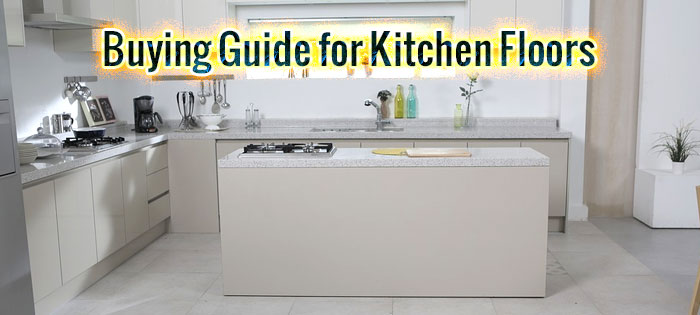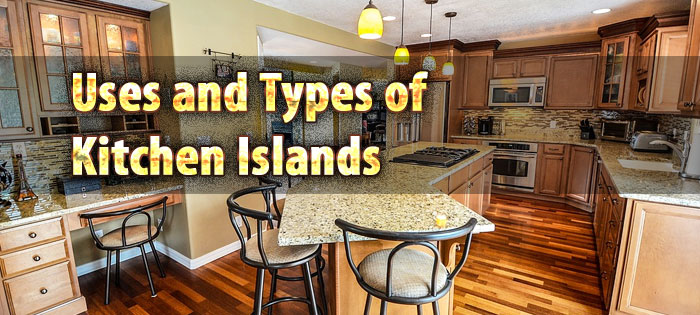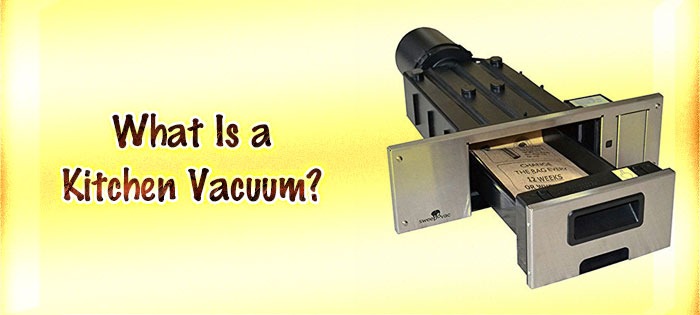How Do You Create a Smart Kitchen for Your Home?

To create a smart kitchen, you'll want to start with a central smart home hub that can control all your connected devices. Focus on essential components like a smart refrigerator with interior cameras, voice-controlled ovens, and automated lighting systems. Set up an efficient work triangle between your sink, stove, and refrigerator while ensuring adequate counter space and strategic outlet placement. For budget-friendly options, consider smart plugs, speakers, and timers to upgrade existing appliances. Establish automated routines aligned with your cooking habits, and prioritize hands-free operation. The path to your ideal smart kitchen becomes clearer as you investigate each component's potential.
Essential Smart Kitchen Components
Anyone can convert their traditional kitchen into a high-tech culinary command center with the right smart components. When planning your kitchen remodel, start with essential smart appliances that'll remodel your cooking experience. A smart fridge equipped with interior cameras lets you check your groceries remotely and suggests recipes based on what's inside, making meal planning effortless.
Install a smart oven with voice control capabilities to take your cooking precision to the next level. You'll be able to preheat, adjust temperatures, and receive notifications when your dishes are done, all through simple voice commands. Complement these major appliances with smart lighting systems that you can control via smartphone or voice, ensuring perfect illumination for food prep and creating the right ambiance for dining.
Don't forget to add a smart speaker to your connected kitchen setup. It'll serve as your virtual sous chef, helping you set timers, convert measurements, and play your favorite cooking playlist. Finally, upgrade your storage with touch-sensitive cabinets featuring built-in USB ports and pull-out solutions, making your smart kitchen both functional and efficient.
Selecting Your Smart Home Hub
The brain of your smart kitchen ecosystem lies in choosing the right smart home hub. As the central control point for your connected devices, selecting a compatible hub guarantees seamless integration of your kitchen appliances, lighting, and other home systems.
Popular options like Amazon Alexa, Google Home, Apple HomeKit, and Samsung SmartThings offer varying features and compatibility levels. When selecting your hub, first check if it works with your existing smart appliances and the devices you plan to add. You'll want a system that provides reliable voice control and remote access through your smartphone, allowing you to manage your kitchen from anywhere.
Consider how your smart home hub will integrate with broader home systems like security and climate control. This integration enables powerful automation possibilities, such as having your kitchen lights turn on automatically when you disarm your security system or adjusting your thermostat when your smart oven is running. Look for a hub that offers intuitive controls and straightforward setup processes. Remember, your hub choice will impact your kitchen's functionality and your ability to expand your smart home ecosystem in the future.
Planning Your Kitchen Layout
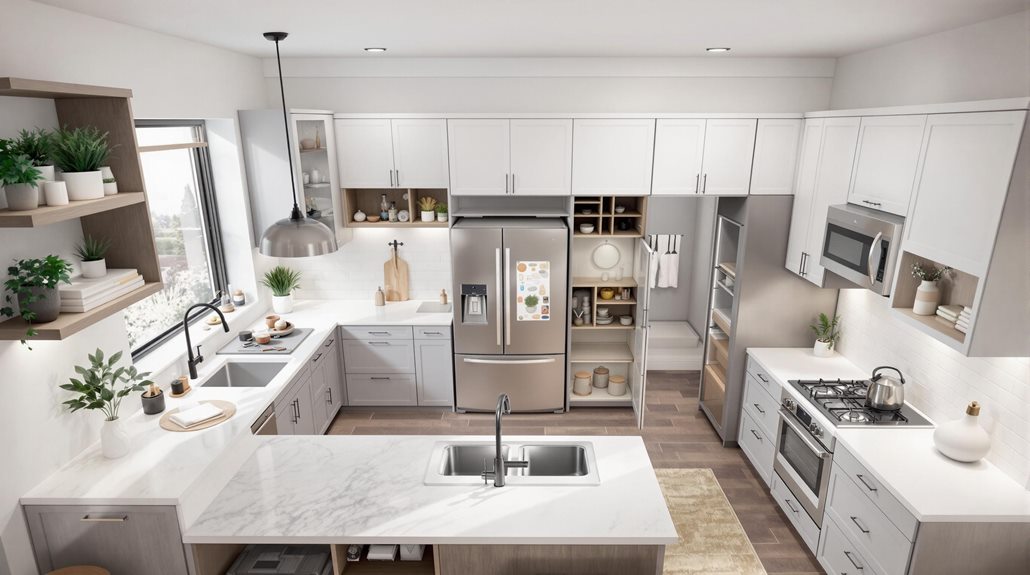
Planning your smart kitchen's layout requires careful consideration of both traditional design principles and modern technology requirements. Start by establishing an efficient work triangle between your sink, stove, and refrigerator to create a foundation for seamless movement throughout your kitchen space.
Organize your kitchen layout into distinct zones for food preparation, cooking, and cleanup. You'll need to confirm adequate counter space for your smart devices and appliances while maintaining enough room for everyday tasks. When planning electrical outlet placement, consider the power requirements of your smart appliances and where you'll most likely use portable smart devices.
Maximize your kitchen's functionality by incorporating versatile storage solutions. Install pull-out pantries, lazy Susans, and customizable cabinetry to make the most of vertical space. Don't forget to plan for proper lighting and ventilation, as these elements are vital for both comfort and the optimal performance of your smart devices.
Your workflow will benefit from strategic placement of smart appliances and ensuring they're easily accessible within their designated zones. Remember to leave room for future upgrades and additional smart devices as your kitchen technology needs evolve.
Budget-Friendly Smart Kitchen Solutions
Creating a smart kitchen doesn't need to break the bank. By strategically investing in affordable smart technology, you'll transform your kitchen into an efficient, modern space without overspending. Start with basic smart plugs and switches, which can make any traditional appliance smarter, from your coffee maker to your slow cooker.
A smart speaker powered by Amazon Alexa or Google Assistant serves as your kitchen companion, helping you set timers, convert measurements, and control other smart devices hands-free. When cooking, a smart kitchen timer or food thermometer guarantees precise results while saving you time and preventing overcooking.
To enhance your kitchen's ambiance, install smart bulbs that you can adjust for different activities - bright lighting for food prep and softer illumination for dining. Connect all these devices through a smart home hub, making it easier to manage your smart kitchen technology from one central point.
Remember to prioritize devices that offer the most practical benefits for your cooking routine. Start with essential items and gradually expand your smart kitchen collection as your budget allows, focusing on technology that genuinely improves your daily kitchen activities.
Kitchen Automation Best Practices
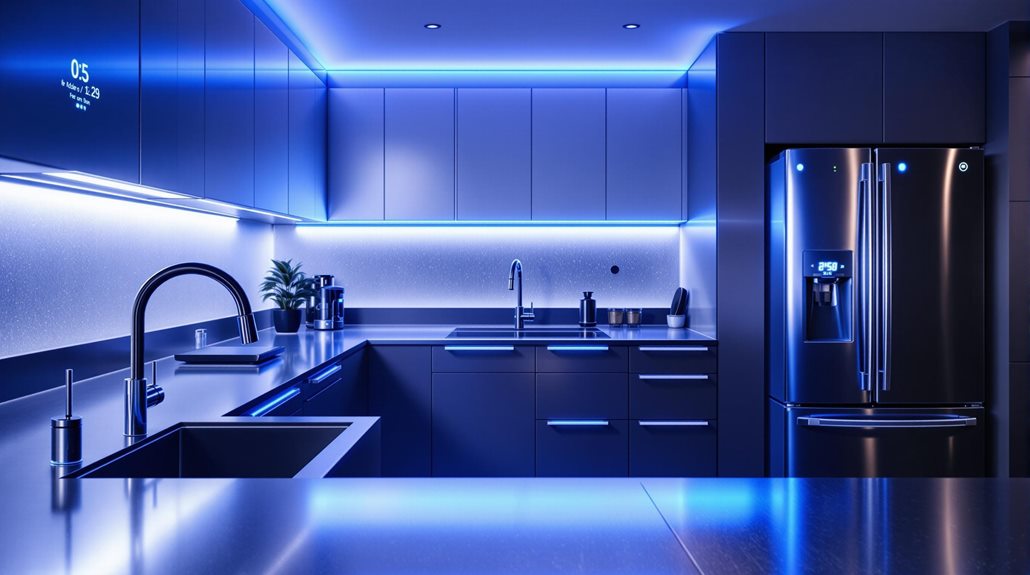
Successfully automating your kitchen requires a systematic approach focused on seamless device integration and intuitive controls. Start by selecting a central hub like Amazon Echo or Google Home to serve as your kitchen's command center. This foundation allows you to coordinate your smart gadgets and create a cohesive ecosystem that'll make your life easier.
When setting up your smart kitchen, prioritize voice commands for hands-free operation. You'll appreciate being able to adjust smart lights, control smart ovens, and set timers while your hands are occupied with cooking tasks. Connect your smart technology through a unified platform to guarantee all devices work together efficiently.
To maximize the benefits of kitchen automation, establish routines that align with your cooking habits. Program your smart lights to activate when you enter the kitchen, set your smart ovens to preheat automatically at specific times, and configure alerts for when cooking cycles complete. Monitor your appliances remotely through smartphone apps, allowing you to check cooking progress from anywhere in your home. Remember to implement energy-saving features like motion sensors for lights and automated water controls to make cooking both convenient and effective.


